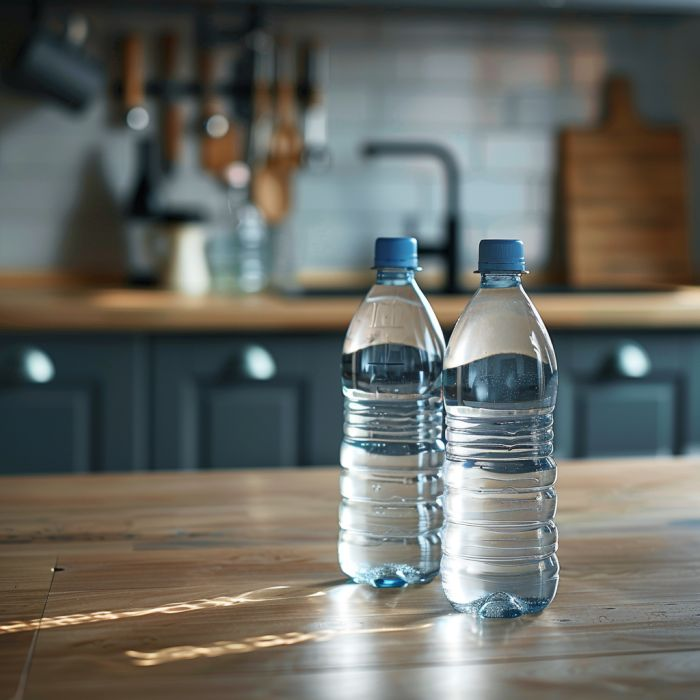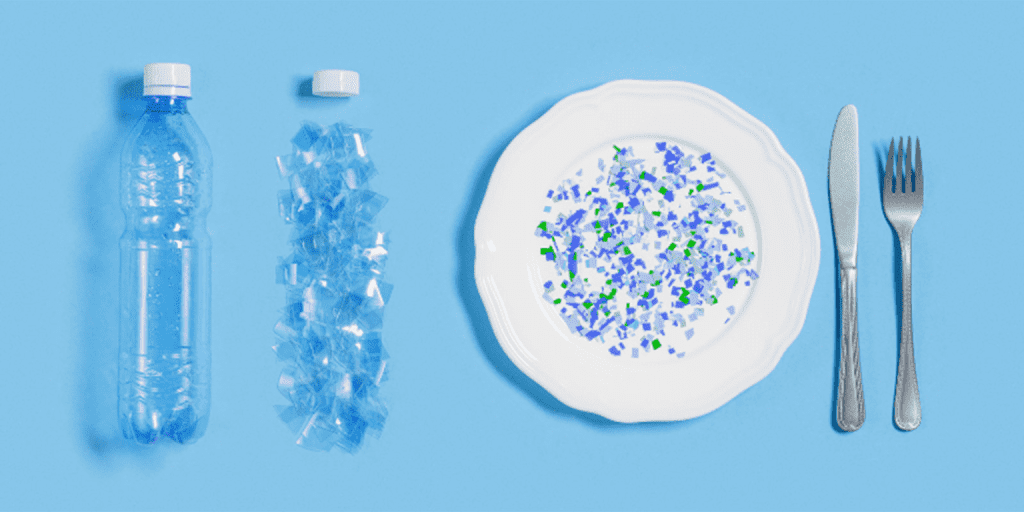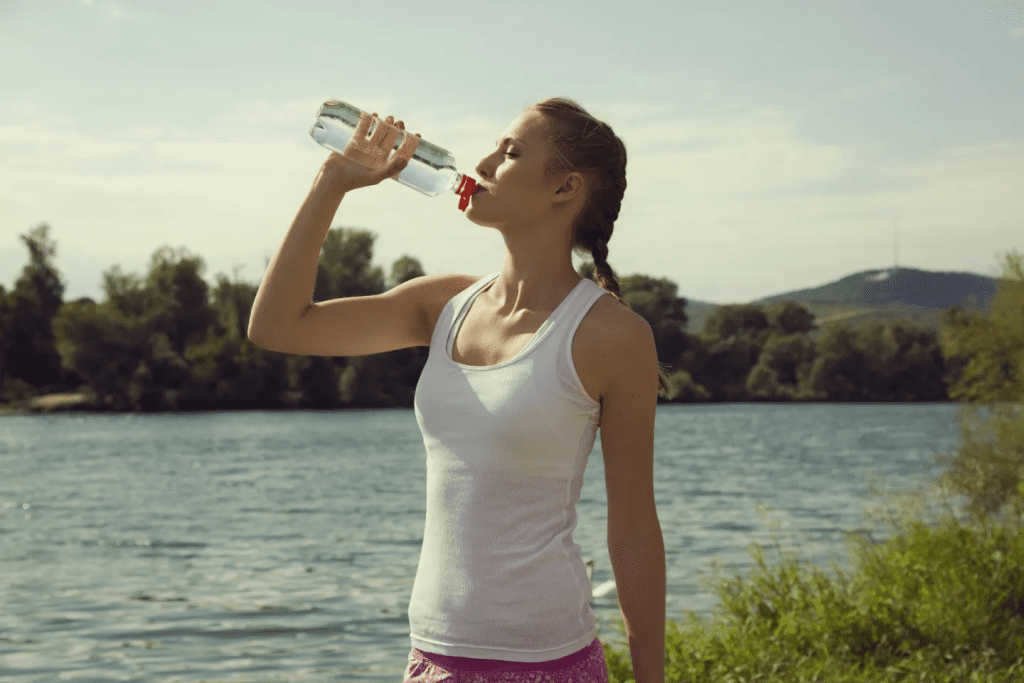Water is essential for our health, and staying hydrated is crucial. With plastic bottled water being readily available, it’s no surprise that many people, like your husband, turn to them daily for convenience. But recently, there’s been growing concern about what these plastic bottles could be adding to your water: microplastics. Could this daily habit have unintended health consequences? Let’s dive into the truth about microplastics in bottled water, why they’re a concern, and why plastic bottles remain on store shelves despite these potential risks.

What Are Microplastics and How Do They Get Into Bottled Water?
Microplastics are tiny plastic particles, usually less than five millimeters in size, that can either be created intentionally or result from the breakdown of larger plastic items. You might find them in products like cosmetics or industrial cleaners, but they can also end up in bottled water due to the manufacturing process or through the degradation of the plastic bottle itself. These particles are now widespread in our environment, from oceans and rivers to the foods we eat, and yes, even in bottled water.
How Microplastics End Up in Bottled Water
Microplastics can enter bottled water in several ways. They can come from:
- The Bottling Process: During production, plastic particles can inadvertently end up in the water.
- Plastic Degradation: Over time, the plastic from the bottle may start to break down, releasing microplastics into the water.
- Environmental Contamination: Water sources contaminated with microplastics may also be bottled, further spreading these particles.
Health Concerns Surrounding Microplastic Consumption
The impact of microplastics on human health is still an emerging field of research, and scientists are working to understand the risks involved. Here are some of the current concerns regarding microplastic ingestion:
1. Potential for Inflammation and Toxins
Microplastics, when ingested, could potentially lead to inflammation in the body. This is because they are foreign particles that our bodies cannot break down. Additionally, some plastics contain chemicals like phthalates or BPA, which can leach into water. These chemicals have been linked to hormone disruption and other health issues.
2. Carriers of Bacteria and Pollutants
Due to their small size, microplastics can act as carriers for bacteria or environmental pollutants. They may carry these contaminants directly into the body when ingested, potentially increasing the risk of infections or other health complications.
3. Accumulation in the Body Over Time
Although the long-term effects of microplastics on human health are not yet fully understood, there’s a possibility that they could accumulate in the body over time. This accumulation might lead to health issues that we’re only beginning to understand.

While the risks are concerning, regulatory agencies currently consider the levels of microplastics found in bottled water to be within acceptable limits for human consumption. However, research is ongoing, and guidelines may evolve as we learn more.
Why Are Plastic Water Bottles Still for Sale?
Despite these health concerns, plastic water bottles remain popular. Why haven’t we moved away from plastic altogether? Here are some of the reasons plastic bottles continue to dominate the market:
1. Economics and Convenience
The bottled water industry is immensely profitable, generating billions in revenue each year. Plastic is cheap to produce, lightweight for shipping, and easy to transport, making it a cost-effective solution. For consumers, plastic bottles offer the convenience of on-the-go hydration, which has only increased their demand.
2. Regulatory Approval
Current regulations from organizations like the FDA or WHO indicate that the microplastic levels in bottled water fall within safe consumption limits. These standards are based on the best available science, but as more data comes to light, this could change. Until regulations shift, manufacturers will continue to produce plastic bottles as an approved option.
3. Alternatives Are Less Popular
While alternatives like glass and stainless steel exist, they haven’t replaced plastic due to higher costs and logistical challenges. Glass bottles, for instance, are heavier and more prone to breaking, increasing transportation costs and safety concerns. Stainless steel bottles are more expensive, which can deter consumers from making the switch.

4. Limited Awareness and Habitual Use
Not everyone is fully aware of the potential health risks associated with microplastics. For many people, the convenience and habit of using plastic bottles outweigh the risks, particularly when there’s a lack of public urgency on the matter.
Reducing Plastic Use for Better Health and a Cleaner Planet
Given the concerns about microplastics, you may wonder if there are better ways to stay hydrated. The good news is that there are plenty of alternatives to plastic bottled water that can help reduce your exposure to microplastics. Here are a few ideas:
1. Switch to Reusable Bottles
Opt for reusable bottles made from materials like stainless steel or glass. They’re durable, easy to clean, and free from microplastics. Plus, investing in a reusable bottle is cost-effective in the long run and better for the environment.
2. Install a Water Filter at Home
Installing a high-quality water filter can help reduce contaminants, including microplastics, from your tap water. With a filtration system, you can enjoy clean, safe water without the need for plastic bottles, all while reducing your environmental footprint.
3. Support Environmentally Friendly Brands
Many companies are exploring sustainable alternatives to plastic, such as plant-based or biodegradable materials. Supporting these brands can help drive the market towards environmentally conscious options, ultimately reducing our reliance on plastic.
Conclusion: Finding the Balance Between Convenience and Health
While the habit of drinking from plastic bottles may be convenient, it’s essential to consider the potential health implications. Microplastics have raised concerns among scientists and health experts, and as more research emerges, our understanding of these risks will continue to evolve. In the meantime, exploring sustainable alternatives like reusable bottles and filtered tap water can help you reduce microplastic exposure and make a positive impact on the environment.
Your husband’s hydration is, of course, important. But perhaps it’s time to consider other options that align with both health and environmental goals. Whether it’s by choosing a reusable bottle, supporting sustainable brands, or simply being more mindful of plastic usage, every small change can lead to a healthier lifestyle and a cleaner planet. So next time you reach for a bottle of water, take a moment to consider where it comes from—and what it may contain.


